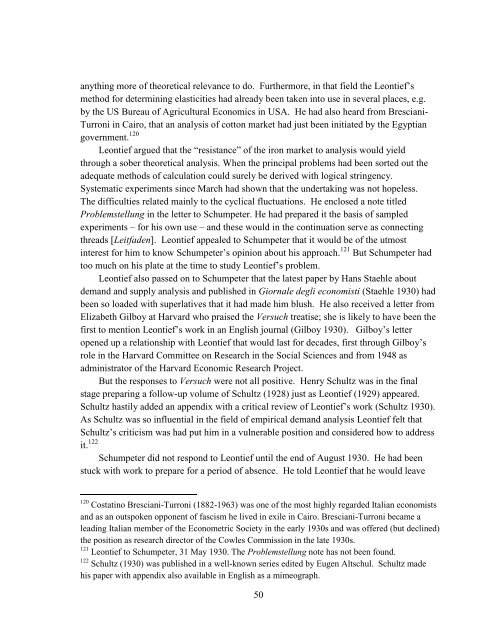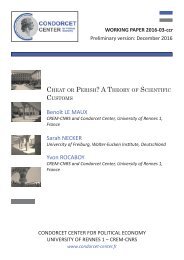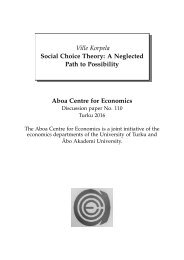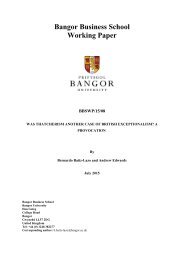MEMORANDUM
n?u=RePEc:hhs:osloec:2016_018&r=hpe
n?u=RePEc:hhs:osloec:2016_018&r=hpe
You also want an ePaper? Increase the reach of your titles
YUMPU automatically turns print PDFs into web optimized ePapers that Google loves.
anything more of theoretical relevance to do. Furthermore, in that field the Leontief’s<br />
method for determining elasticities had already been taken into use in several places, e.g.<br />
by the US Bureau of Agricultural Economics in USA. He had also heard from Bresciani-<br />
Turroni in Cairo, that an analysis of cotton market had just been initiated by the Egyptian<br />
government. 120<br />
Leontief argued that the “resistance” of the iron market to analysis would yield<br />
through a sober theoretical analysis. When the principal problems had been sorted out the<br />
adequate methods of calculation could surely be derived with logical stringency.<br />
Systematic experiments since March had shown that the undertaking was not hopeless.<br />
The difficulties related mainly to the cyclical fluctuations. He enclosed a note titled<br />
Problemstellung in the letter to Schumpeter. He had prepared it the basis of sampled<br />
experiments – for his own use – and these would in the continuation serve as connecting<br />
threads [Leitfaden]. Leontief appealed to Schumpeter that it would be of the utmost<br />
interest for him to know Schumpeter’s opinion about his approach. 121 But Schumpeter had<br />
too much on his plate at the time to study Leontief’s problem.<br />
Leontief also passed on to Schumpeter that the latest paper by Hans Staehle about<br />
demand and supply analysis and published in Giornale degli economisti (Staehle 1930) had<br />
been so loaded with superlatives that it had made him blush. He also received a letter from<br />
Elizabeth Gilboy at Harvard who praised the Versuch treatise; she is likely to have been the<br />
first to mention Leontief’s work in an English journal (Gilboy 1930). Gilboy’s letter<br />
opened up a relationship with Leontief that would last for decades, first through Gilboy’s<br />
role in the Harvard Committee on Research in the Social Sciences and from 1948 as<br />
administrator of the Harvard Economic Research Project.<br />
But the responses to Versuch were not all positive. Henry Schultz was in the final<br />
stage preparing a follow-up volume of Schultz (1928) just as Leontief (1929) appeared.<br />
Schultz hastily added an appendix with a critical review of Leontief’s work (Schultz 1930).<br />
As Schultz was so influential in the field of empirical demand analysis Leontief felt that<br />
Schultz’s criticism was had put him in a vulnerable position and considered how to address<br />
it. 122 Schumpeter did not respond to Leontief until the end of August 1930. He had been<br />
stuck with work to prepare for a period of absence. He told Leontief that he would leave<br />
120 Costatino Bresciani-Turroni (1882-1963) was one of the most highly regarded Italian economists<br />
and as an outspoken opponent of fascism he lived in exile in Cairo. Bresciani-Turroni became a<br />
leading Italian member of the Econometric Society in the early 1930s and was offered (but declined)<br />
the position as research director of the Cowles Commission in the late 1930s.<br />
121 Leontief to Schumpeter, 31 May 1930. The Problemstellung note has not been found.<br />
122 Schultz (1930) was published in a well-known series edited by Eugen Altschul. Schultz made<br />
his paper with appendix also available in English as a mimeograph.<br />
50





